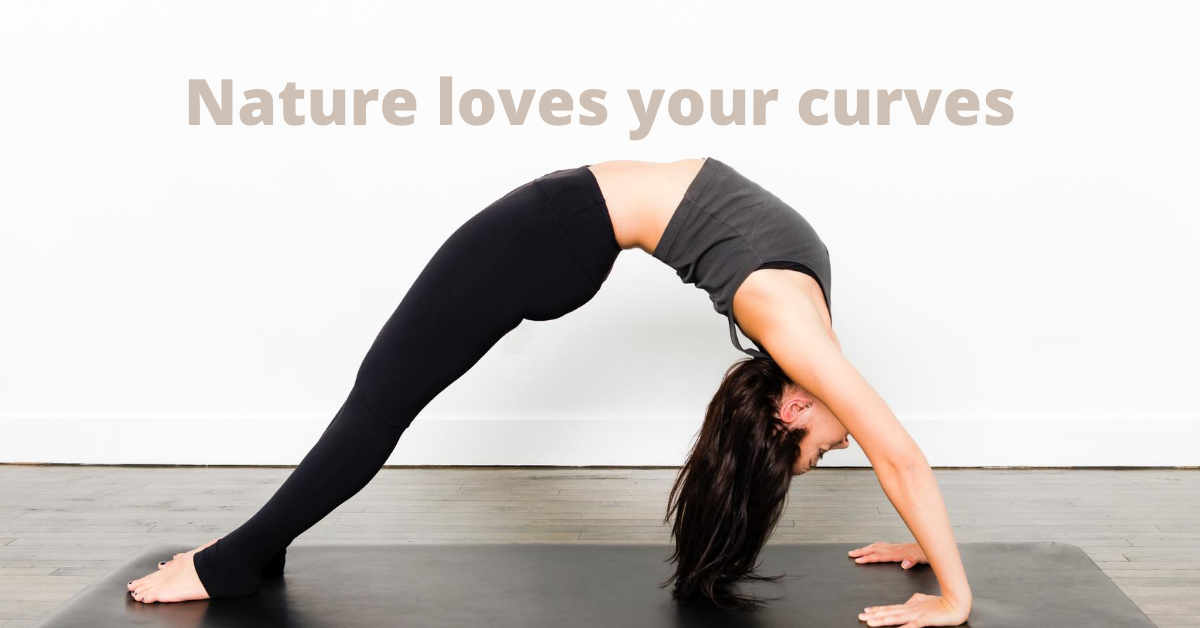The spiral is one of the most common patterns in nature. And many such spirals can even be measured to have similar proportions, sometimes called a golden ratio.
If you want to read more about it, search the “Fibbonacci sequence in nature” in your favorite search engine, or check out this article on the Fibbonacci phenomenon. It’s some pretty fascinating stuff and can help us see that there are patterns to physical structures even in places devoid of humans.
What it all means is debatable. Answering that question isn’t what this short article is about. Rather, it’s to draw your attention to the fact that there are physical laws to nature, and some of them may even influence our spine.

Let’s focus on the arc and architecture of the human spine…
When you cut a spiral in half, you get an arc. In fact you’ll see an arc that is similar to the arc you will see when you take an -ray of a healthy child (one without the physical trauma common to adults.)
We can say two things about the shape of arc in nature – it’s a strange combination of flexibility and strength.
An arc is dynamic. An arc holds potential energy and can act like a spring; think of a bow shooting an arrow. While the spinal bones don’t hold energy per se, they are connected by muscles, ligaments, and fibrocartilage pads that are in a balanced tension that holds potential energy. The natural state (without trauma) is to hold the shape of the neck in a curve, neither straight nor flat.
An arc provides stability. The arc in your neck is also protective and gives stability. It’s a good shape to protect the delicate nervous system tissue inside: like a bridge over a tunnel, or a Roman aqueduct .
When you take a couple of arcs and put them back to back, you get something like a sinusoidal wave.
The wave is also a shape in a nature (think of sound waves and light waves). Waves are also a form of an arc.
And just like the spiral, the sinusoidal-type wave is also found in architecture as well.
The crankle crinkle walls as a kind of sinusoidal wave
Have you seen pictures of funny looking serpentine walls, often photographed in in the UK?
Recently I saw a social media post about something called a crinkle, crankle wall which is found in various parts of the UK and I found them fascinating. Is there something beneficial about putting opposite arches in a wall?
Yes, there is something special about the serpentine/crinkle crankle wall that is not found in a straight wall.

The opposite curves in the wall allow the wall to be its own buttress or support.
With its serpentine shape, these long thin, wavy walls actually are stronger with a single brick/stone layer than a traditional straight up and down wall. The wall is able to resist axial loads of gravity without requiring the same support structures of traditional walls, making it stronger with less material (as shown in this article: crinkle crankle calculus.)
A single arc, arch, or bridge structure can tell us about the purpose of a single spinal curve, but what the way that our multiple spinal curves work together?
Can we say, like like a crinkle crankle wall, the waves of the spine (4 curves in all) are there for a reason?
Yes, we can say that the four curves (cervical/neck, thoracic/midback, lumbar/low back, sacral-coccyges/tailbone) help the spine stay strong and resist the axial pull of gravity.
Curvature also aids in weight distribution and offsets the weight of gravity. Each curve in the spine works to distribute weight evenly throughout the area, where different muscle groups can bear the burden of balance and stability. This is especially true during dynamic movement. Lifting, bending, turning, and more all require the spine to move in tandem with the rest of your body, while also supporting your weight and the energy transfer created by your actions.
Why is Your Spine S-Shaped? The Importance of Spinal Curves, Chiropractic Biophysics
As the spine breaks down to trauma and these curves flatten, the spine loses its ability to resist axial loads, experiencing a loss of vitality and experiencing more inflammation and pain.
We could even say that the more these curve flatten, and in multiple areas of the spine, the worse the breakdown may become.
Is it time to listen to the clues found in nature?
Spiral, arcs, and waves. They show up in many places in nature, and they point to the fact that there are certain laws in the physical structure of the universe.
These laws may have a role to play in our spines, which means these shapes shouldn’t be taken lightly nor neglected nor should it be seen as normal when they break down.
Image attributions
Nautilus Shell via Wikimedia: Chris_73
Crinkle crankle wall featured in “curves gives strength” image is from MilesRedd on Instagram, found via ChewKnew and Bored Panda Website
- Announcing the Winter Boot Drive of 2024 (to benefit homeless) - December 16, 2023
- Thoughts determine the quality of life – Tips for new patients (Part 8) - September 18, 2023
- Why hasn’t anyone told this to me before? Tips for new patients (Part 7) - September 18, 2023


